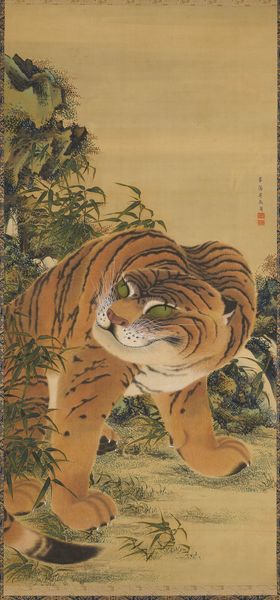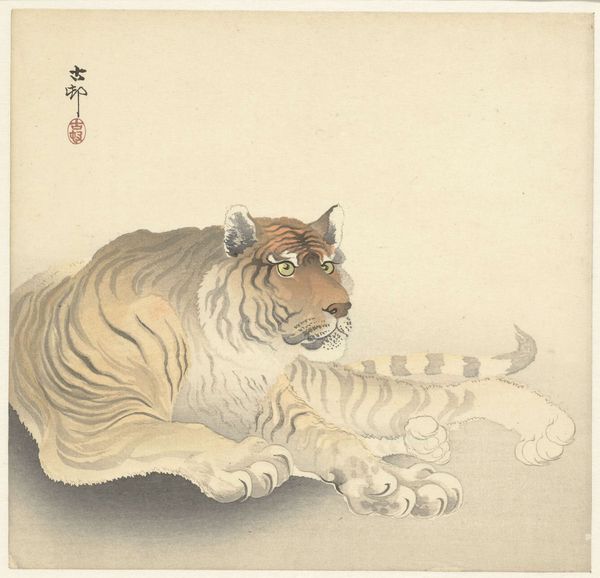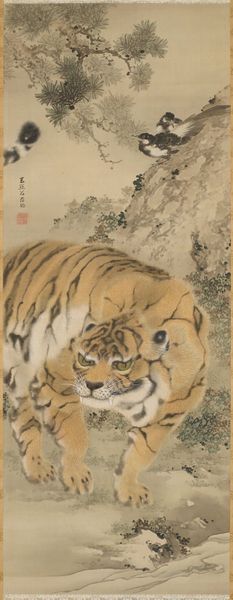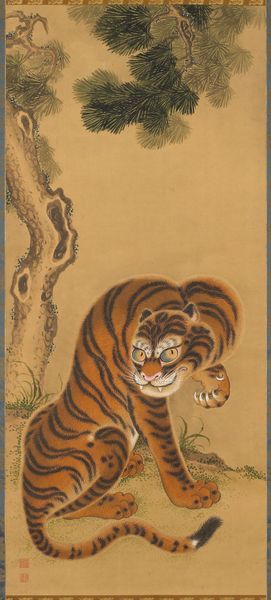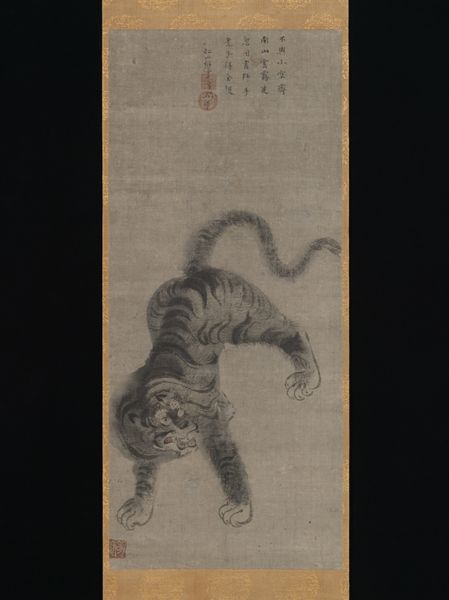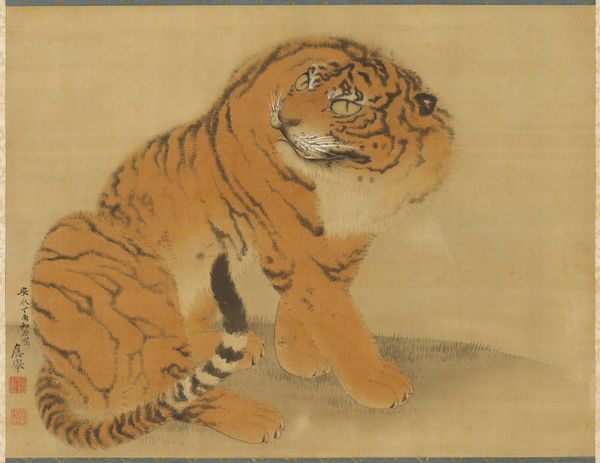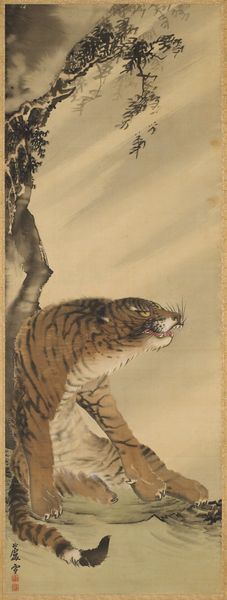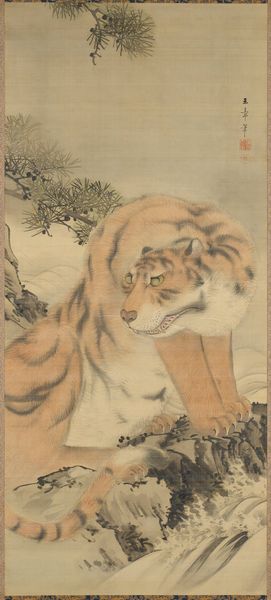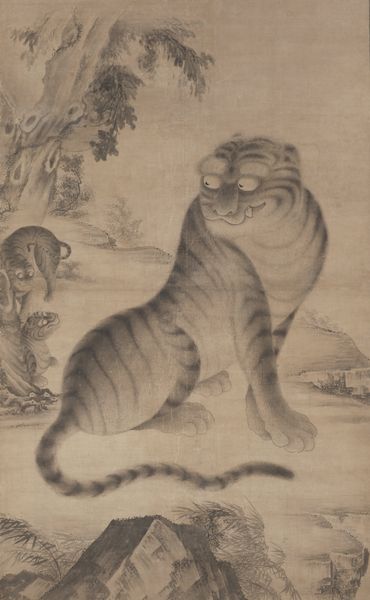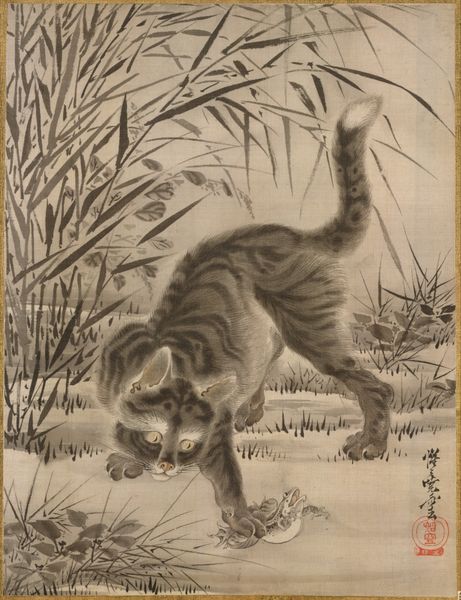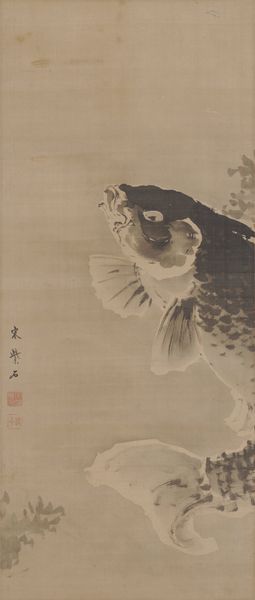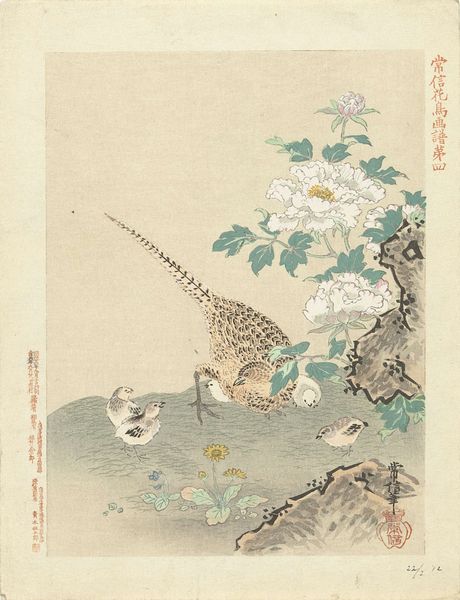
tempera, painting, ink
#
portrait
#
ink painting
#
tempera
#
painting
#
asian-art
#
landscape
#
figuration
#
ink
#
orientalism
#
realism
#
calligraphy
Dimensions: 41 3/4 x 22 in. (106.05 x 55.88 cm) (image)69 1/2 x 30 1/4 in. (176.53 x 76.84 cm)
Copyright: Public Domain
Editor: Here we have Katsu Gyokushu’s “Seated Tiger” from 1786, rendered in ink and tempera. The tiger itself has a very lifelike presence, almost piercing. How would you interpret this work, thinking about the choices of material? Curator: I find it fascinating to consider how the materials – ink and tempera – directly affect the reception of this "realistic" image. Gyokushu wasn't simply depicting a tiger; he was participating in, and perpetuating, a specific kind of commodity. Can you think of what labor was necessary to make the painting materials available? Editor: Right, the process of making the ink and preparing the tempera would involve different specialized labor, shaping how it was consumed as an artwork. Curator: Precisely. Tempera's earth pigments link it to landscape itself; the ink reflects its own making. The calligraphy and seals become markers of the painting's journey as a valued object. This interplay reminds us that even ‘naturalistic’ images are deeply rooted in production and social exchanges. Think about its acquisition: by whom, and from where? These layers impact the symbolism we often ascribe to a tiger, independent of the act of artistic production. Editor: So, instead of seeing just a portrait of a tiger, we should consider it as an artwork enmeshed within historical means of artistic production and the economy in the late 18th century? Curator: Exactly. It’s less about inherent symbolism and more about what the making and exchange of such an object represents within its cultural moment. I'd love to know who first owned it. Editor: This perspective definitely gives me a new way to approach art history. I will be more thoughtful of where all these paintings and their materials originate from. Curator: It provides us with concrete understanding of its existence, hopefully challenging romantic visions about creation and its impact on the market value of works like “Seated Tiger.”
Comments
No comments
Be the first to comment and join the conversation on the ultimate creative platform.
